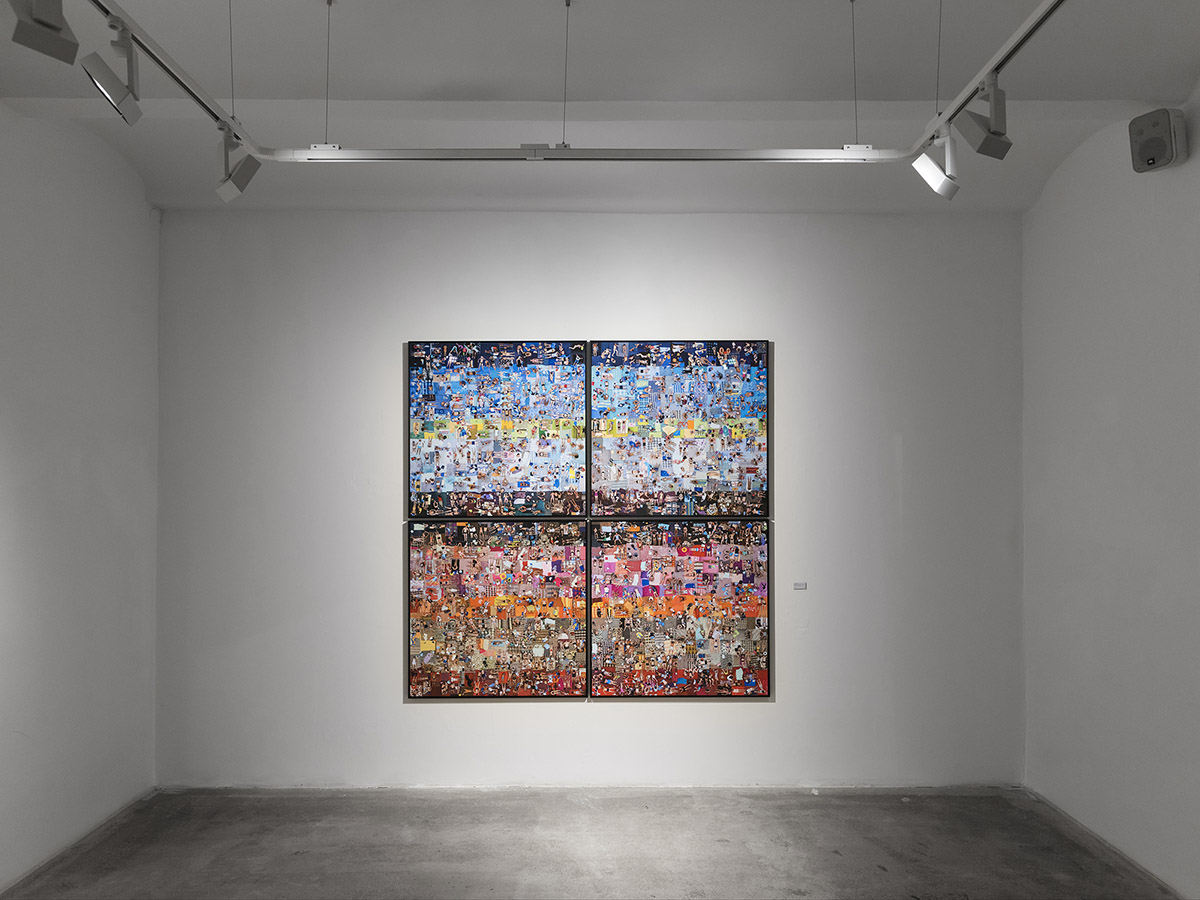Afterimage / Weaving
Flying is just as important to me as taking pictures. When I’m up in the air, steering a paraglider or a gyrocopter, I am both a pilot and a photographer. I hold both the camera and the controls.
My subject is the beach. There was no avoiding it. I was born by the sea; I still live there. The beach, where the land and the sea meet, is my natural habitat. I like to watch it transform throughout the year, as the sea changes colour and smell, as it sounds differently, revealing its many faces and teasing the land. But what fascinates me most is the confrontation of the beach and the people. Their relationship oozes with tension.

I have watched people on the beach for years. The way they colonize it with their windscreens, blankets, towels. The way they choose their spot: not too close to others, but not too far either. Quite close, actually. That’s how the sunbathing village is set up, with its traffic routes and plazas, fancy villas and cramped studios, a tower with a view and a fashion show. There are deliverymen and social interactions. The sunbathing village is constantly changing - like a living organism. It pulses with its own rhythm, waking up at sunrise, growing, blossoming, slowly dying down towards the evening, with the remaining few gathered around bonfires. In the morning it is reborn. It is a process of creation and existence of a structure.
I watch it from my paraglider, constantly moving. I look around for other pilots and obstacles. I keep track of clouds and signs of wind on the water. I see the ground at a sharp angle. When I spot “it”, I fly over, press the shutter button and fly on. I can’t hover in one place to take a closer look. I can’t look right away at the pictures I took. There’s no need, anyway. The photograph is created in my imagination; pressing the shutter button only records the image, as it did back in the day. When I return to the ground and look through my beach photos, I notice they don’t exactly mirror what I saw and felt in the air. It maybe because I fly forever along the beach and it keeps on changing. There are empty stretches and those ridiculously crowded. Sometimes the colony of blankets forms a logical structure, sometimes it is only a blotch of colour, like a flock of flamingos.

It’s as if I wanted a single image to convey the impression of traveling by train. Sitting by the window, I sometimes feel I understand the landscape. The rhythm of the train, the frequency of trees flashing before my eyes, lights blinking – together they form a meaningful message. Trying to capture this in a photograph is frustrating. The same goes for the beach. I am so disappointed by the difference between the photograph and the image in my mind that I keep returning to Władysławowo. Year after year, flight after flight, I strive to capture the essence. The number of pictures grows but I am still not satisfied. In order to convey the impressions and sights imprinted in my mind, I decided to break with strictly documentary photography. This is how the Weaving/Afterimage series came about. I used fragments of various photos to reconstruct my visual memories.
A prominent Polish avant-garde abstractionist painter, Władysław Strzemiński, based his work on the concept of an afterimage. Each image registered by the human eye is accompanied by a biochemical afterimage created on the retina. It affects everything a person sees. Like a virus, it transfers its features onto other images. It influences how we perceive and analyze the world. It affects our memories, the way we sense the space around us and memorize what is important.

Krystyna Jacobson, my grandmother and a painter, weaved tapestries. As a boy I watched her at the loom and wondered how it is to labour over one thing for so long. I asked myself what is more important: the process or the outcome. I always wanted to prove myself in this type of work. To create something from start to finish. To obtain material, process it and prepare for work. To get the feeling of the texture. To follow your intuition and create, immersing yourself in the process for hundreds of hours.

And so I take my documentary photographs and use them as raw material. I extract colours, bodies and textures and arrange them in new ways. Afterimages is the effect of deconstruction and re-creation.
Welcome to my carpet, enjoy your flight!
PS. Documentary series about the beach and the way people rest can be found HERE.